After publishing my March post chronicling the artistic presence of elephants in Berkeley, I got many tips for depictions of elephants to include and here I show you the best of the new. Caveat/tease – there will be another post about an absolutely astonishing collection of elephants.
I am surprised by the popularity of elephants. I can’t explain it.
Could it have something to do with the elephant joke fad of the early 1960s, with the books and trading cards and just stop, dear God, just stop! Probably not. The reason for their popularity is undetermined.
If you check out the bas relief at Rasputin’s Records at 2401 Telegraph you will find these.
Your assignment – read and tell us whether this is a wooly mammoth or a mastodon. It is certainly close enough to elephant to be included here. Plus it is a tiny architectural detail that not many notice.
Above them, relief of a lion.
This next sweet little elephant is on the porch of Beany and Dick Wezzelman, whose house filled with African art has been the subject of a post here
About this elephant, Beany wrote: “Its name is ‘Tembo,’ which is the Swahili word for (you guessed it) elephants! I got it two years ago in a store in Borrego Springs while visiting Anza Borrego State Park. The store owner said it was made by someone from Mexico, but he didn’t known his name. I think Tembo is happy in Berekely, but he didn’t know his name.”
Another Quirky Berkeley Believer, Ruth Tobey, also wrote me about Beany’s elephant and sent me this photo..
Good job Tembo!
After my first elephants post, Susan Kuchinskas wrote me: ” I have an elephant that looks just like the one on Ensenada Ave; it has an attachment to a hose and water comes out of its trunk. Someone gave it to me; I think it was a standard thingie you could buy at a garden center.” The elephant lived on Francisco in Berkeley from 2000 until 2016, when it moved a few miles north to El Cerrito. For me that is more than sufficient nexus. This elephant counts!
We have seen in these pages Christa Rybczynski and Lawrence Grown and their work at Metro Lighting.
Grown explains the part of the project that is relevant here:: “This elephant made of lamp parts sits atop our gleaming tool cabinet at Metro Lighting. It was put together by a visitor to our booth at a mini maker faire a while back. Its companions are a lamp part chameleon I made for kicks and a lamp part lyre I made as a prop for a Walden School musical.” What beauties!
Berkeley readers offered up several modest elephant figure collections.
Alice (Neurology, Psychiatry) and Fred Feller (attorney) moved into their South Campus home about 20 years go. In cleaning out the house, they found several elephant figurines. An innocent start, no? Over the years, the herd grew. When my original elephant post was published, Fred wrote me: “If interior elephants are not out of bounds, come visit our couple dozen.” Yes, of course there is a cardinal rule of Quirky Berkeley that inside stuff doesn’t count, and yes, of course that rule is ignored routinely and without guilt.
Each piece is a joy.
Amidst the herd of elephants is what you might call a gargoyle but which I might call a grotesque.
There is a great vibe to the Feller collection. Each piece is beautiful and stands alone. The collection is not so large that people would tire looking at each piece. Good choices Fellers!
Sally Francis of North Berkeley sent me photos of her elephants collection: She wrote me this explanation of her collection: “I’m gratified that you appreciate my quirky little community of pachyderms. I’m a long-time resident of Berkeley, graduated from UCB in 1965. My husband Jonathan (now a retired physician) and I raised three kids here. Our daughter Shoshana lives here too — she teaches math at Berkeley High. I am a retired psychologist. Jon and I have traveled a lot, and some years ago, I began to acquire small elephants, mostly from Asia or Africa. I especially love my Ganeshas! I had the small shelf built to accommodate all the elephants, and since I’ve pretty much run out of room, I’m not really looking for more. The most common injuries they sustain are broken trunks, usually at the hands of our various grandkids, who naturally find them irresistible.”
The photos she sent:
Ending with these two Ganesha figures from Laos – join me in saying “Good job!”
So far, we were missing something important – an elephant topiary. Wait no longer.
Great topiary, no?
Next to the elephant is what appears to be a giraffe.
Cheating now! Elephants of Berkeley that I found searching the web.
Whelan’s Smoke Shop has several elephant-shaped pipes. Whether we approve of all aspects of these pipes, we must admire the elephant design.
And – several by Patricia Uchill Simons of the Berkeley Potters’ Guild.
This beauty is from Namaste Yoga and Wellness on Seventh Street.
The Cactus Jungle Nursery and Garden shows this elephant shrine from Cowpers Street.
I found this photo of an elephant mural at the Ajanta Restaurant online. I never ate there yet.
I know these steps well. Lily loves them.
A club at Berkeley High that is what it says it is, a club that celebrates elephants.
My friend read through the post. “I always hated elephant jokes. And blonde jokes. And ethnic jokes. And most canned jokes for that matter. Wit is fine, but set pieces, I don’t know.”
“That’s good to know,” I said. “What about the post?”




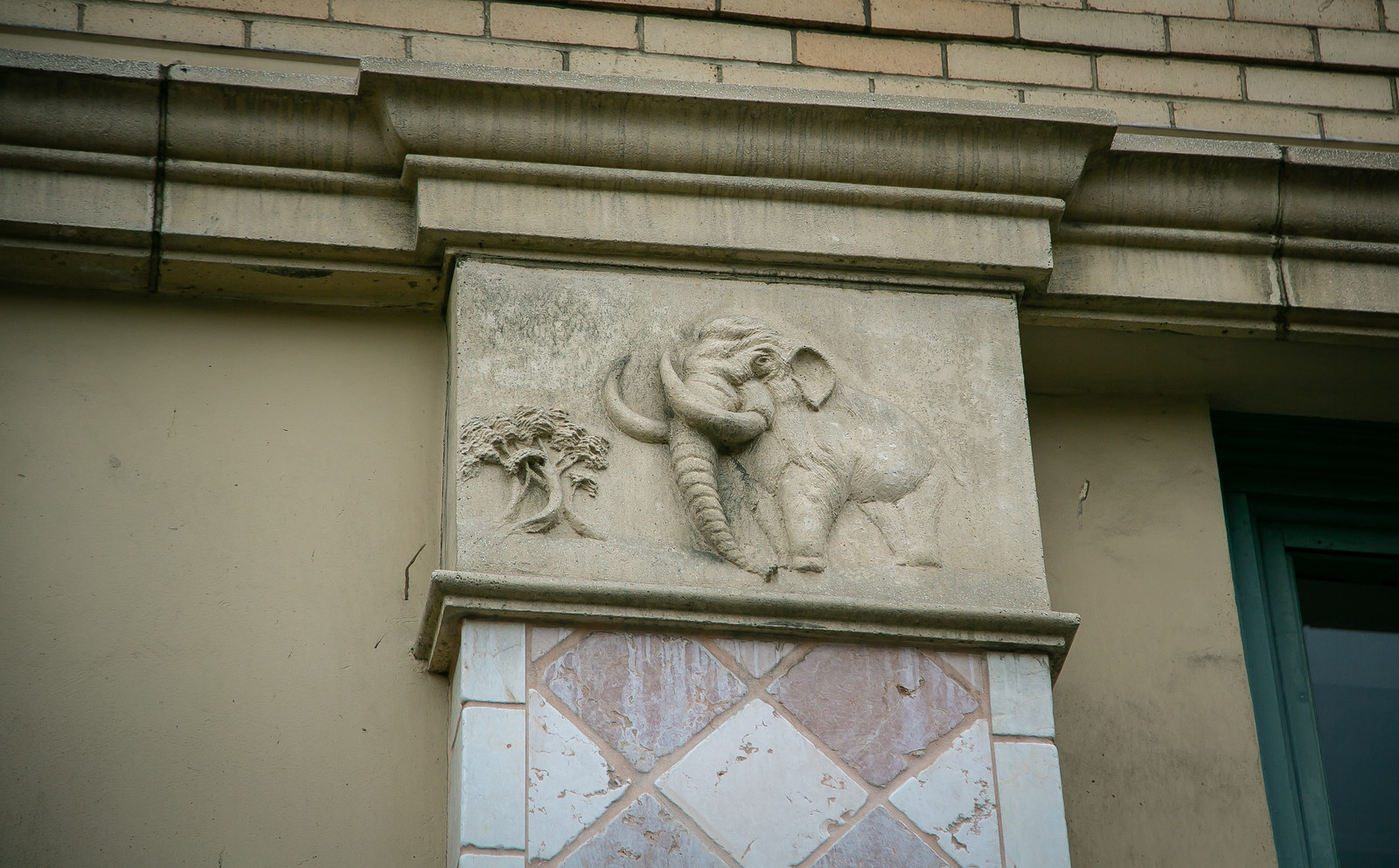
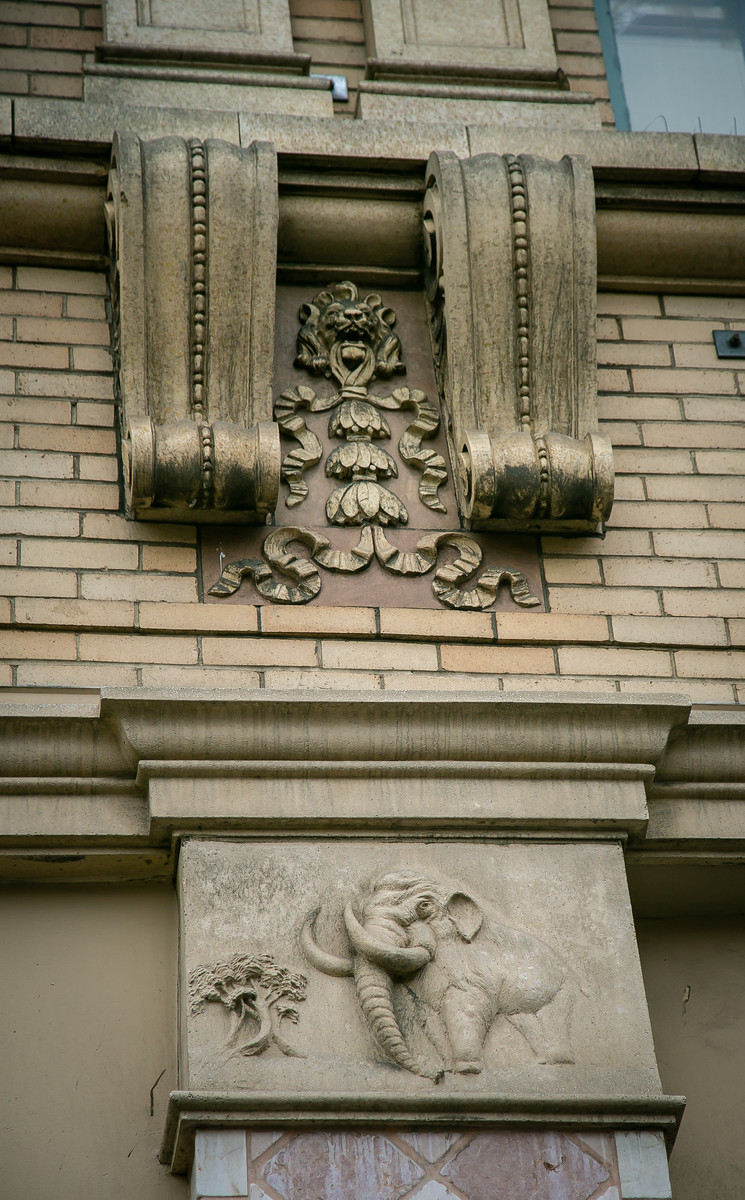

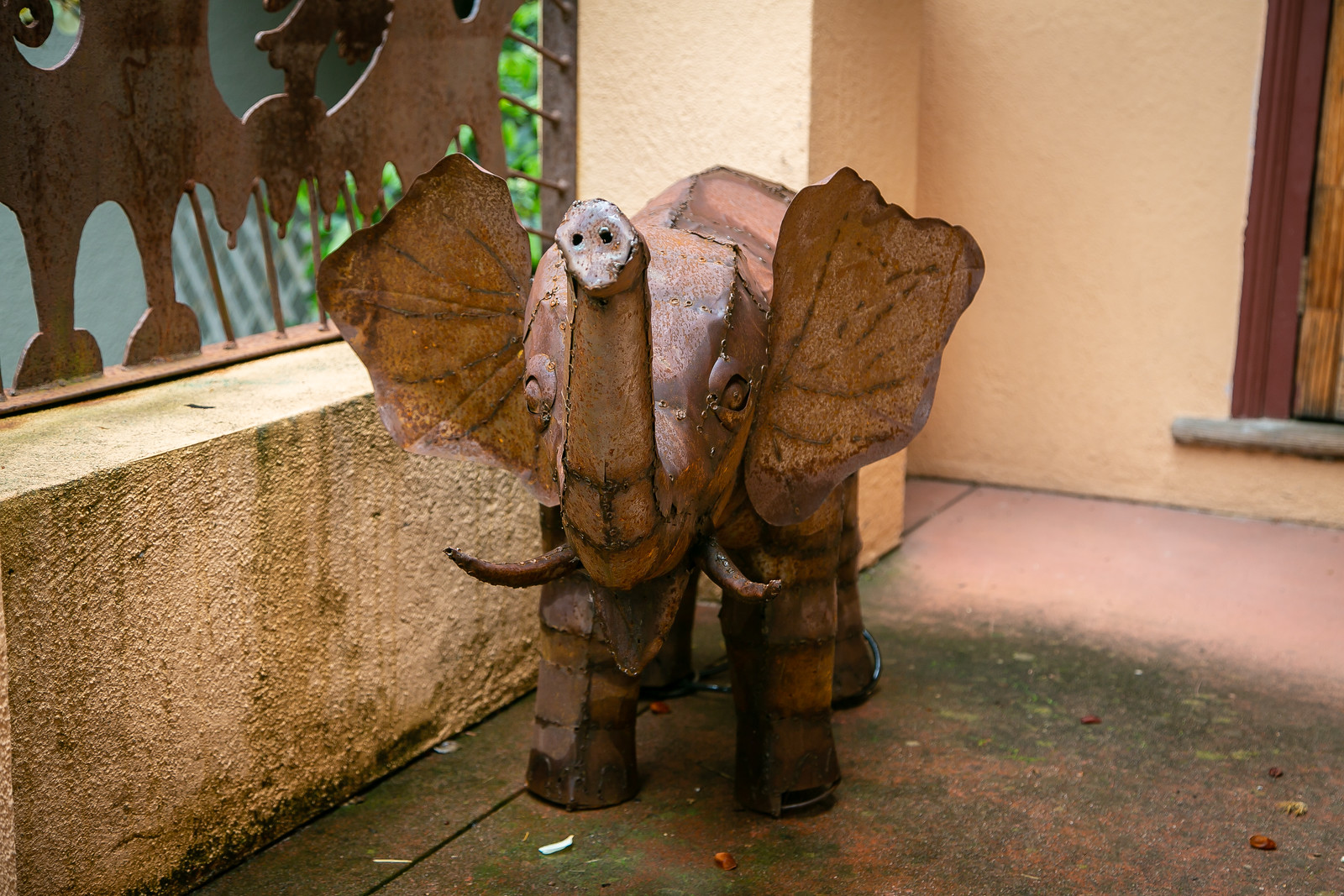



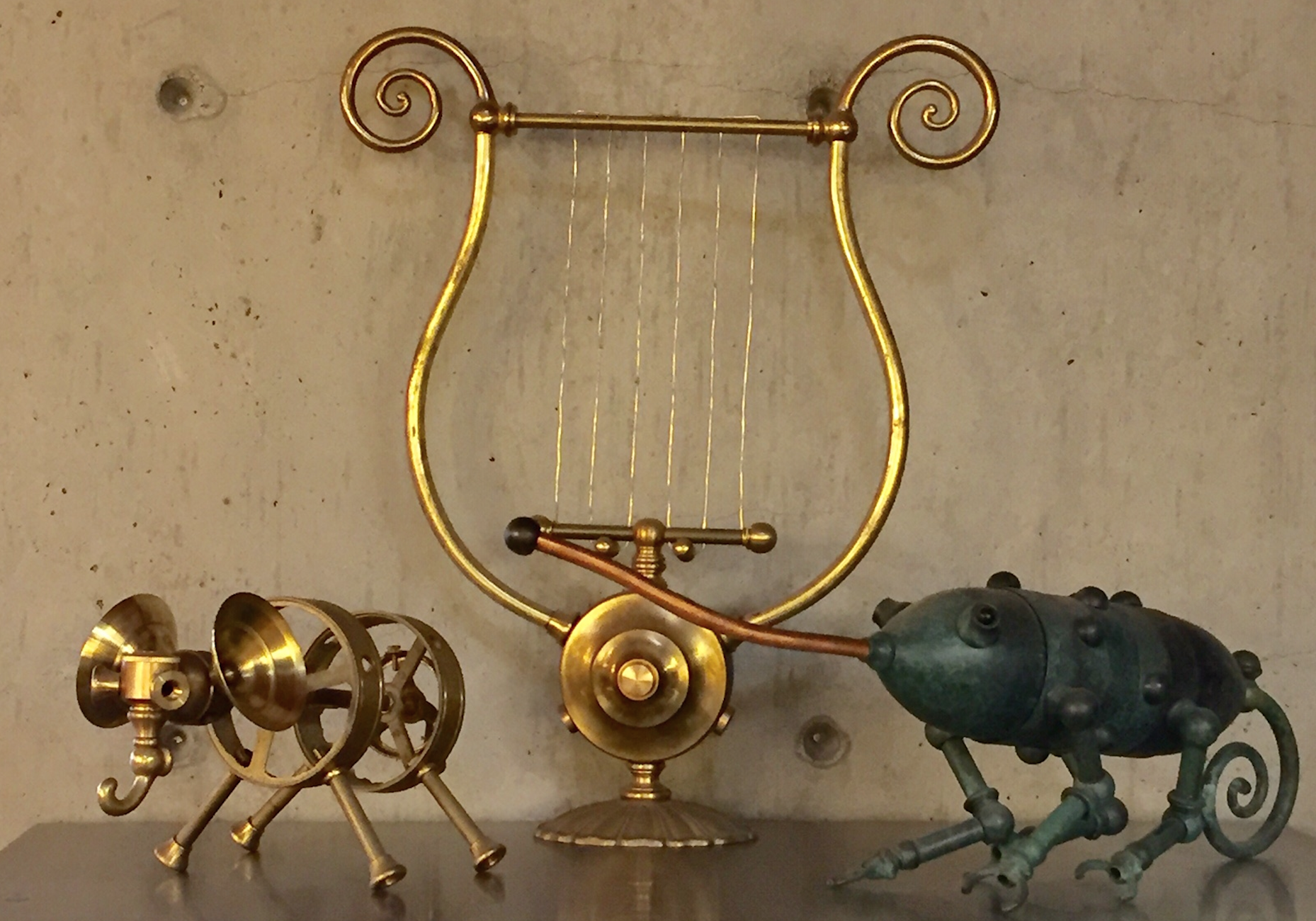

























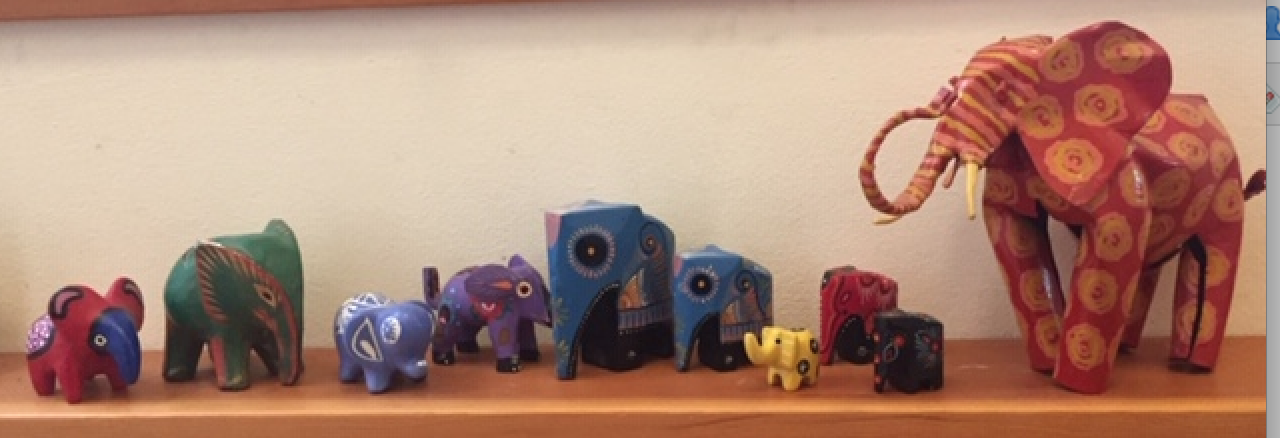
















Berkeley indeed has a long and noble elephantine history.
Being the inveterate (and possibly invertebrate) dilettante polymath, I would posit that the bas-relief on the cornice of the Rasputin’s building depicts neither a woolly mammoth nor a mastodon but rather a Columbian mammoth (Mammuthus columbi),
once undoubtedly native to Berkeley.
The Columbian mammoth and the Pacific mastodon (Mammut pacificus) both lived in the Bay Area during the Pleistocene era.
Earlier during the Miocene era, the Bay Area was also home to another mastodon-like creature called Gomphotherium.
While in this paleological vein, might I also suggest that the stylized lion located in the cornice above the mammoth bas-relief actually represents the American lion (Panthera atrox), the largest cat that ever existed, which was also a likely Bay Area resident during the Pleistocene.
Maybe the Elephant on Rasputin’s is Ken?